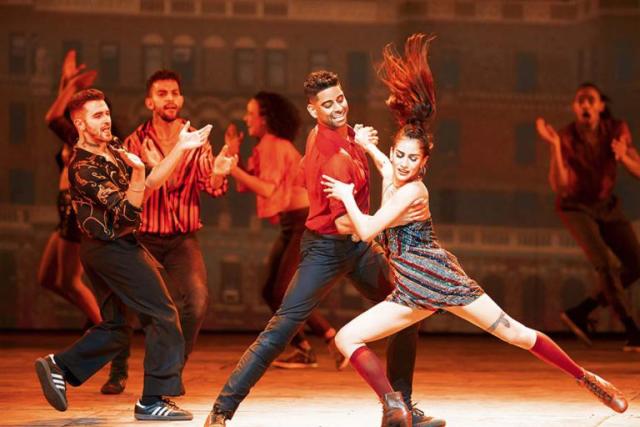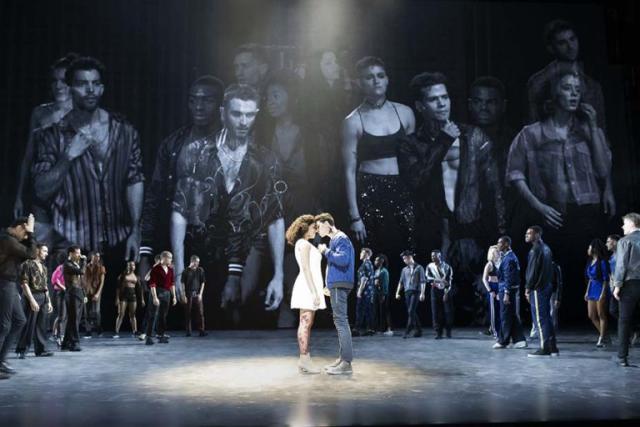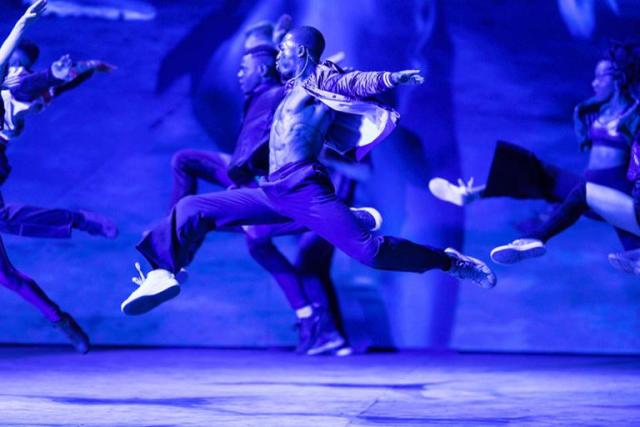


When it was announced controversial director Ivo van Hove would be staging a revival of the beloved West Side Story, you could practically hear the screams of musical-theater purists. While many classic tuners have undergone significant reinterpretation—My Fair Lady and Oklahoma! being the latest—the classic street-gang remake of Romeo and Juliet has never been altered in a major way. Since its 1957 opening, all four of its previous Broadway revivals, as well as numerous touring companies, have featured Jerome Robbins’s original choreography. Robbins also directed all of those revivals except for the one in 2009 (he died in 1998). That last one was staged by Arthur Laurents, the author of the book, and his staging retained most of Robbins’s concepts. Van Hove has turned such non-musical classics as The Little Foxes, A Streetcar Named Desire, A View from the Bridge, and The Crucible inside out, so a radical reimagining of this firmly established favorite was in the offing. Then news leaked during rehearsals that there would be no intermission and the charming “I Feel Pretty” and the “Somewhere” ballet would be cut, eliciting further moans of despair from the traditionalists. Something was coming but would it be something good?
Now that this bracing, decidedly different production has opened, it can be reported that van Hove maintains the rough, raw spirit of Robbins’s creation while making it relevant, real, and riveting for today’s audiences. Leonard Bernstein and Stephen Sondheim’s score retains its muscular beauty with a full-bodied orchestra under music supervisor and director Alexander Gemignani. The Black Lives Matters and Me Too movements are evoked without seeming shoehorned into Laurents’s pithy and pungent take on 1950s juvenile delinquency and race relations. At first Van Hove’s innovations seem distracting and pretentious, but, as you get used to them, their power and immediacy become overwhelming.
The opening ballet lets us know right away that is not your father’s West Side Story. The Jets walk onto an empty stage and suddenly the gang members’ images are projected on a giant screen (Luke Halls designed the sharp video projections), staring blankly at the audience. Bernardo of the Sharks walks on. Territorial movement ensues as the Puerto Rican Sharks encroach on the American-born Jets’ neighborhood. Then the two competing squads erupt into Anne Teresa De Keersmaeker’s animalistic, angular choreography, replacing Robbins’s ballet-based dances. As the story of the Jets’ Tony dangerously falling for Bernardo’s sister Maria emerges, the huge screen images alternate with the live actors. That’s because Jan Versweyveld’s detailed settings of the interiors such as Doc’s drugstore, Maria’s bedroom and the dress shop where she works, open up behind the screens, backstage, and into dressing rooms, and the camera follow the actors. The videos initially take away from the live action on stage but they are gradually integrated into the staging and accentuate the explosive emotions rather than dominating them.
You may be a bit confused as to the setting and time. Youthful street fighters pull out I-phones to record police brutality and at times a Jet or a Shark can be seen wielding a sophisticated video camera to project the rumble or the dance at the gym on the big screen. These racially polarized gangs still speak in Laurents’s 1950s street slang, but the casting is integrated and “woke.” The Jets are now a diverse mix of African-American and white kids, while the Sharks feature an openly gay couple who appear to be totally accepted by their peers (would that really happen, even in 2020?).
These choices are van Hove’s equivalent of placing a Shakespearean production in a contemporary setting and retaining the Elizabethan language and references. Despite these confusing bumps, the basic plot still moves tremendously, and the superb, intense performances would work, both dramatically and musically, in a more conventional production. Isaac Powell conveys Tony’s yearning passion for Maria and a life beyond the dead-end neighborhood. He’s also convincingly tough as a former gang member and displays a strong voice. Shereen Pimentel gives Maria bite and humor as well as a glorious soprano. It’s a shame “I Feel Pretty” was taken from her.
Dharon E. Jones and Amar Ramasar are blazing volcanoes of energy as the rival gang leaders Riff and Bernardo while Yemeni Ayala gives Anita a combination of compassion and spice. In this update, the taunting dance features graphic explicitness as Anita is sexually assaulted by the Jets and Ayala delivers a fiery depiction of victimization and an intense volley of hatred as a response.
Elijah A. Carter, Matthew Johnson, Zuri Noelle Ford, and Jacob Guzman create memorable individual portraits of gang members and Daniel Oreskes, Thomas Jay Ryan, Danny Wolohan, and Pippa Pearthree lend dimension and empathy to the adults who are powerless to stop the tragedy.
This production is both a refreshingly radical take on a classic and an emotionally effective appeal to the tear ducts. In one searing sequence, Tony and Maria are literally pulled apart by their conflicted communities. Yet the two lovers struggle to be together. Van Hove employs presentational, symbolic staging to deliver the authors’ message and it’s just as much of a gut punch as a more traditional choice, demonstrating this is a West Side Story for all tastes and ages.
